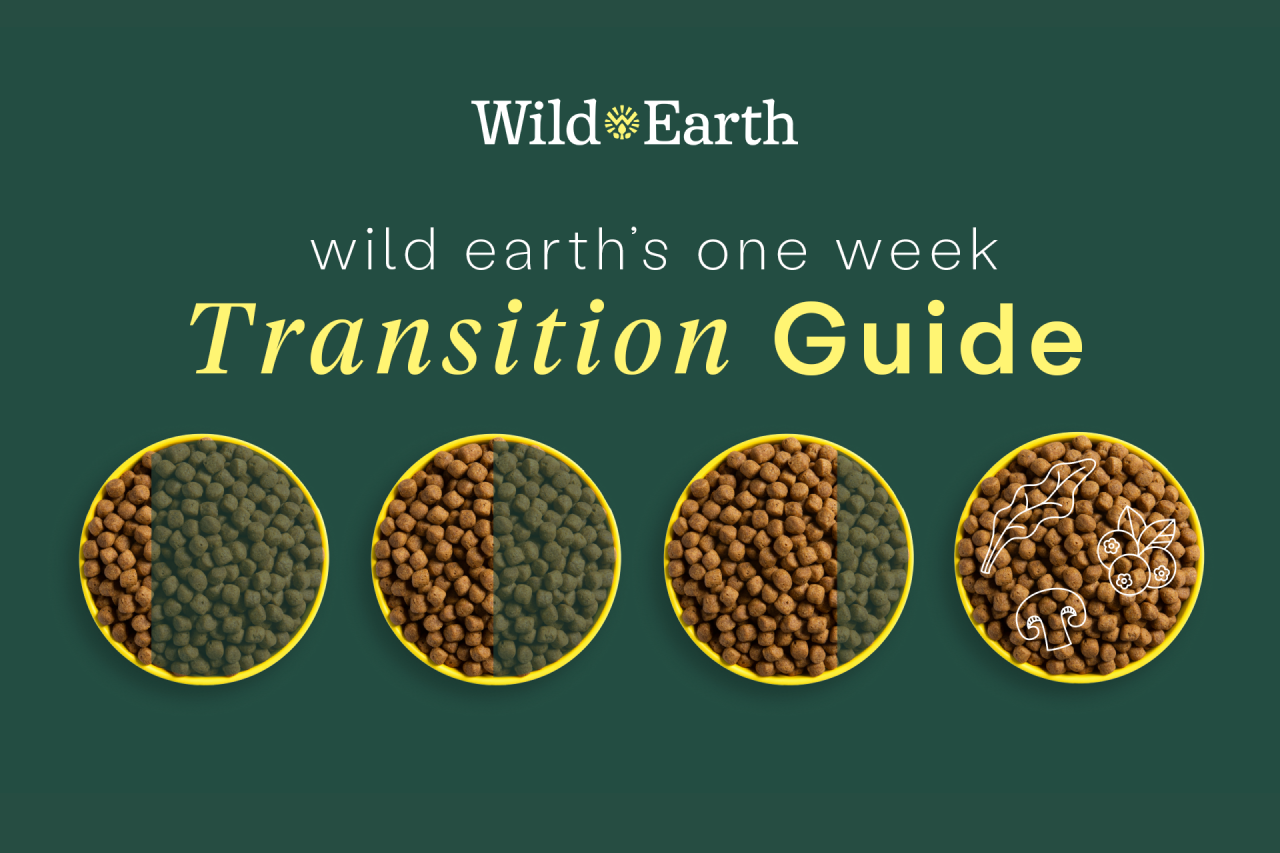
How (and Why) to Transition your Dog to a New Food
One of the most common reasons pet parents take their dog to the veterinarian is for gastrointestinal (GI) upset.
Without a doubt, the majority of acute GI cases are related to changes in diet. Loose stools, diarrhea, nausea, and vomiting are often caused by ingesting spoiled, discarded, or inappropriate foods (“garbage can-itis”), eating too much too rapidly (“leftover-itis”), and sudden changes in formulation or ingredients (“abrupt transition-itis”).
Intestinal parasites, infectious diseases, and many medical conditions may also lead to GI upset, but the first rule-out for dogs that unexpectedly develop these symptoms is always food.
Let’s dig into the importance of proper diet transition for your dog to help avoid any intestinal issues.
Why Transitioning to a New Food is Important
Many pet parents question why it’s necessary to transition to a new dog food? After all, humans eat a variety of foods and don’t require any special precautions (except for maybe that weird curried chili dish…). That ingredient variety is part of the reason humans can get away dining at a deli for lunch and enjoying dim sum for dinner with few issues. In contrast, our dogs typically eat a narrow selection of food ingredients for months to years. Sure, we offer the occasional (or often) table yummy or daily treats, but our dogs mainly eat a prix fixe menu. This “fixed menu” is the foundation for needing a proper diet transition. But why?
Whenever you change a dog’s diet, you change their food ingredients and nutrient formulation. Most dog food companies have “feeding philosophy” that guides how they make their diets. At Wild Earth, we believe a plant-based diet is better for our dogs, the environment, and other animals. Other companies favor different protein sources, lower-fiber or higher-fat formulations. That doesn’t mean one is necessarily better (or worse) than another, it just means pet parents have more choices on what to feed their pooch (although we still think ours is best!).
If you suddenly feed a full meal (or two) of a higher fiber food, the chances are good your dog will experience some GI upset. The same goes for different proteins, fat content, and even nutrient formulations. The reason this happens turns out to be deeper than the food bowl.
When you change your dog’s diet, you also change what you’re feeding their gut bacteria or microbiome. Recent research shows that switching diets alters the richness and diversity of the canine microbiome. If this transition occurs abruptly, the gut bacteria may shift dramatically and GI symptoms develop. By easing into a new diet, you allow any changes in gut bacteria populations to occur in a safe - and diarrhea-free - fashion.
How to Transition to a New Food
Switching to plant-based dog food is the same as any diet transition. Because Wild Earth’s food is rich in healthy dietary fibers (especially beta-glucans) and higher in highly digestible proteins, a gradual transition is important. Most meat-based dog foods are relatively low in dietary fiber, meaning your dog’s microbiome will likely need to adjust.
I recommend you start by feeding about three-quarters of your old meat-based food mixed with one-quarter of the new complete and balanced plant-based diet for two to three days. Then feed a fifty-fifty mixture for another two to three days, followed by two to three days of one-quarter of the previous animal meat diet mixed with a three-quarter plant-based diet. Most dogs can transition without any GI issues over a seven to ten-day period.
Transition Troubleshooting
If your dog develops any soft or loose stool during the transition, reduce to the last acceptable level for an extra three to four days. For example, let’s say your dog was fine feeding the 50:50 mixture for two days. But after you added 75% of the new food, you noticed a “cow plop” stool. The first step is to do nothing for 24 hours. It takes about twelve hours for a dog to fully digest a meal (I call this “bowl to bowel”), so you need to wait for at least 12 to 24 hours before you can conclude it’s diet-related (or something else).
If after the next feeding cycle you still see loose stools, reduce to the 50:50 mixture. If the stool returns to normal over the next day or two, continue feeding the 50:50 blend for an additional three to four days to let the gut bacteria catch up. Increase to three-quarters new for four days, and if everything remains normal, you’re done!
If the loose stool persists or worsens, reduce to a 25:75 mixture as long as your dog is drinking adequately and acting well. If at any time your pet appears weak, stops drinking, or loses their appetite, contact your veterinarian. There’s likely a non-dietary cause for your dog’s clinical signs.
It’s also important to acknowledge that not every diet is going to be a perfect fit for every dog. Few (if any) dog food companies will admit this, but it’s true. If I have a patient that, despite following these transition instructions carefully for up to two weeks, continues to have soft stools, it may be time to look for another cause for the GI issues or try another diet. I’ve seen many GI cases that the pet parents believed were caused by food and were actually an infection or disease. I’ve also seen many poor dog diets produce chronic soft stools and GI irregularities. Ultimately, your dog is an individual with a distinct metabolism and personalized needs.
The most important health decision you make for your dog is what you feed it. At Wild Earth, we believe our dog food formulation is the best for your dog’s health, to help reduce climate change and preserve the environment, and improve welfare for all animals, especially farmed animals.




























